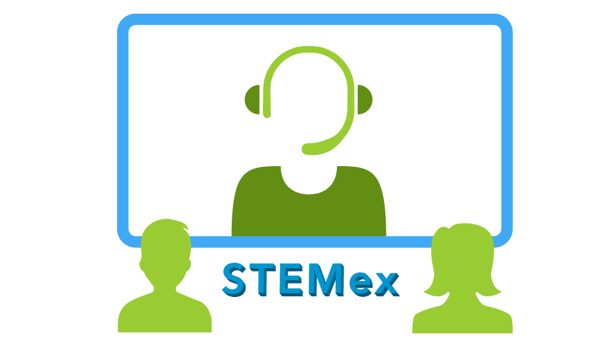
STEMex
STEMex Video Conference: Connect with STEM experts as they share their knowledge and experience in applying science to real world issues. Run on a fortnightly basis STEMex takes the form of short, powerful talks followed by a Q & A session. A range of popular topics provide unique opportunities for students to develop a deeper understanding of the significance of STEM in their world. STEMex aims to build a community of inspired thinkers empowered to make a difference. (Image: Ecolinc)
SCROLL DOWN FOR 2024 BOOKING CALENDAR
Year Level: 3 – 6
Duration: 45 mins
STEM in a box:
No
Background Information:
Today’s students will be responding to the world’s most urgent environmental challenges. Humanity is at a critical environmental turning point. To survive, we must reshape our relationship with nature. STEMex facilitates the sharing of big ideas and bold solutions. It bridges the gap of distance and builds a networked community of learners through the power of video conferencing.
Prior Knowledge:
No prior knowledge is required.
Learning Intentions:
In this program students will:
- Engage with key STEM topics, ideas, issues and challenges
- Develop questioning, listening and communication skills
Activities:
In this video conference students will:
- Hear from a leading STEM expert
- Engage in a Q&A session with a STEM expert
Victorian Curriculum:
Level 3 – 4
Science – Science Communicating
- Represent and communicate observations, ideas and findings to show patterns and relationships using formal and informal scientific language (VCSIS072)
Level 5 -6
Science – Science Communicating
- Communicate ideas and processes using evidence to develop explanations of events and phenomena and to identify simple cause-and-effect relationships (VCSIS088)
IMPORTANT: Cancellation Policy
- When you book you will receive an automated message from Eventbrite. Save this carefully please.
- Any cancellations need to be received in time for STEMLinc to re-sell your tickets to other teachers.
- Please use the Eventbrite confirmation email to facilitate any cancellation of your booking. That will automatically release your ticket for re-sale on our system.
Attention STEM experts: If you would like to become a STEMex presenter please contact us with your details: ecolinc@education.vic.gov.au
Check out our wonderful 2024 line-up of STEM experts
|
Date & Time |
Guest Speaker Topic | Topic Details | Photo |
Booking Link |
| May 2nd 2pm | Expert: Dr Mariana Mayer Pinto Position: UNSW Scientia Senior Lecturer |
Topic: Living Seawalls – bringing marine life back to degraded habitats
Outline: The growing human population is rapidly increasing its environmental footprint in the oceans. This is in part due to a construction boom in our seas. Structures such as seawalls, pylons, pontoons and marinas, are built for diverse purposes such as shoreline protection, recreational activities, energy generation and to facilitate communications. In areas of Australia, such as Sydney Harbour, more than 50% of the shoreline has been modified by seawalls. These marine urban structures destroy and replace natural habitats, and can modify the surrounding sea-floor, often with negative consequences on biodiversity. In particular, the flat and featureless surfaces of marine constructions provide little space for marine plants and animals to live, and few protective refuges from predators and environmental stressors, such as high temperatures. The Living Seawalls has developed an innovative approach to bringing marine life back to the thousands of kilometres of concrete coastlines around the world. Habitat features of natural shorelines, such as rock pools and crevices, which are missing from built infrastructure, are reintroduced in these structures using modular panels. The Living Seawalls panels increase the suitable habitat area for growth of seaweeds, shellfish, and other marine life. Yr Level: 5-6
|
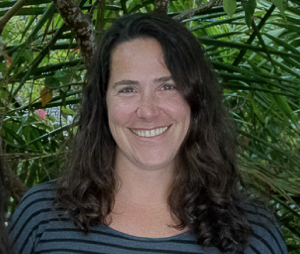 |
Book here |
| May 16th | Expert:
Position:
|
Topic:
Outline: Yr Level:
|
Book here | |
| May 30th | Expert:
Position:
|
Topic:
Outline: Yr Level:
|
Book here | |
| June 27th | Expert: Karen Player
Position: Australian Environmental Education Science Educator
|
Topic: Life in our oceans
Outline: Take a journey beneath the waves to explore the marine world. Learn about some of incredible animals, their adaptations and this unique habitat. Yr Level: Yrs 5-6
|
 |
Book here |
| July 25th | Expert: Dr Mariana Mayer Pinto Position: UNSW Scientia Senior Lecturer |
Topic: Living Seawalls – bringing marine life back to degraded habitats
Outline: The growing human population is rapidly increasing its environmental footprint in the oceans. This is in part due to a construction boom in our seas. Structures such as seawalls, pylons, pontoons and marinas, are built for diverse purposes such as shoreline protection, recreational activities, energy generation and to facilitate communications. In areas of Australia, such as Sydney Harbour, more than 50% of the shoreline has been modified by seawalls. These marine urban structures destroy and replace natural habitats, and can modify the surrounding sea-floor, often with negative consequences on biodiversity. In particular, the flat and featureless surfaces of marine constructions provide little space for marine plants and animals to live, and few protective refuges from predators and environmental stressors, such as high temperatures. The Living Seawalls has developed an innovative approach to bringing marine life back to the thousands of kilometres of concrete coastlines around the world. Habitat features of natural shorelines, such as rock pools and crevices, which are missing from built infrastructure, are reintroduced in these structures using modular panels. The Living Seawalls panels increase the suitable habitat area for growth of seaweeds, shellfish, and other marine life. Yr Level: 5-6
|
 |
Cancelled |
| Aug 8th | Expert: Dr Erin Hahn
|
Topic: How to prevent wildlife extinctions with a time machine
Outline: Between 200 and 2000 species go extinct every single year. Join Dr Erin Hahn as she talks about how science is used to protect endangered species. Dr Hahn isn’t your typical biologist. Rather than looking for scientific evidence out in nature, she goes hunting for clues in dusty old museums! Dr Hahn is a wildlife detective and she uses the information encoded in an animal’s DNA to figure which species need our help most and she provides advice on how to help them. Using modern science, Dr Hahn is turning the halls of the Australian National Wildlife Collection into a time machine that can help us turn back the clocks on wildlife extinctions. Yr Level: 3-6
|
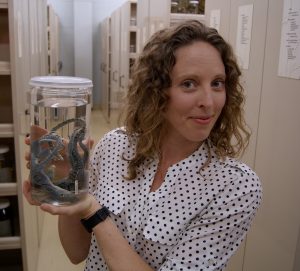 |
Book here |
| August 22nd | Expert:Dr. Tristan Reid
Position:Duty Veterinarian Australian Animal Health Laboratory, CSIRO
|
Topic: Bats, Rats and You: – The link between animal and human diseases
Outline:Have you ever wondered if your dog could catch your cold? We live and interact with animals every day. We have pets, we go to the zoo, we keep animals on farms and we share our parks and gardens with wildlife. Us humans are really not all that different to animals – we all have to eat, drink, sleep and we all have eyes and ears and noses! But what about our diseases? Can humans catch a disease from animals? Can animals catch diseases from us?! And how does the health of our environment impact on the health of both humans and animals? We are learning more and more every day about the fascinating links between animal, human and environmental health – and how important these links are to the future health of all life on our planet. In this session we’ll take a closer look at some examples of where animal and human health have collided in the past, and what we can learn from these events to prevent more disease outbreaks in the future.Dr Tristan Reid completed a Bachelor of Veterinary Science at the University of Melbourne and a Master of Science in Veterinary Epidemiology and Public Health at the Royal Veterinary College, University of London. He is one of the the Duty Veterinarians at the CSIRO Australian Center for Disease Preparedness. Yr Level:5-6
|
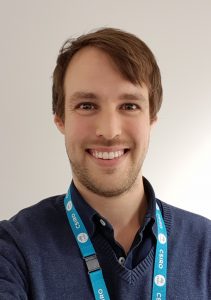 |
Postponed to October 18th Book below please |
| September 5th | Expert: Chelsea Long
Position: Ice Core Technician, Glaciologist
|
Topic: Discussing the formation of ice cores and their importance in understanding the Earth’s climate, what it is like to work in Antarctica, and general ice core processing. With discussions about school subjects and pathways towards careers in STEM
Outline: I knew that I wanted to work in Glaciology ever since someone from the Australian Antarctic Division showed me a picture of a person holding an ice core. My favourite part about ice core chemistry is that it’s the closest thing we have to actual time travel. As ice forms is traps impurities, air bubbles, and water molecules creating a layer in time which tells us about the natural and un-natural changes over decades, hundreds, or even thousands of years! I grew up in Tasmania and was never strong in my maths or science subjects but I didn’t let it stop me and now I work as an ice core technician in -20 degree temperatures every day! Yr Level: 5 & 6
|
 |
Book here |
| September 19th | Expert: Mary Slayo
Position: Phd CandidateSchool of Health and Biomedical Sciences, RMIT University
|
Topic: Your Brain and Junk Food
Outline: What does a brain look and feel like? How do brains know when we’re full? How might junk food change our brain? Inside our skulls lies a grapefruit-sized squishy organ that is responsible for everything we do, feel, and think. Our brains and bodies communicate by chemicals produced by our bodies that travel in our blood. Our brains and bodies also communicate by wire-like structures called neurons that send electrical signals from everywhere in our bodies up to our heads and back again faster than you can blink. Both of these methods of communication can be damaged by not enough nutritious food or too much junk food.In this STEMex lesson, we’ll talk about:
Yr Level: Yrs 5 & 6
|
 |
Book here |
| October 17th | Expert: Amber-Rose Faith
Position:Phd Candidate: University of Queensland School of the Environment
|
Topic:Crime Scene Investigation: Dinosaur Edition
Outline:Palaeontologists are like detectives of the past, and they use special tools to uncover the mysteries of dinosaurs and other ancient creatures! Join PhD Candidate Amber-Rose Faith as she talks about the being a dinosaur detective using the field of taphonomy. Taphonomy investigates how exposure to the sun, flowing water and maybe even some curious or hungry animals might change how dinosaur bones look or move them around before they are buried. So, taphonomy helps us understand the incredible journey that dinosaur bones go on before they’re uncovered by palaeontologists. It’s like reconstructing a dinosaur crime scene!
Yr Level:3- 6
|
 |
Book here |
| October 18th 2pm | Expert:Dr. Tristan Reid
Position:Duty Veterinarian Australian Animal Health Laboratory, CSIRO
|
Topic: Bats, Rats and You: – The link between animal and human diseases
Outline:Have you ever wondered if your dog could catch your cold? We live and interact with animals every day. We have pets, we go to the zoo, we keep animals on farms and we share our parks and gardens with wildlife. Us humans are really not all that different to animals – we all have to eat, drink, sleep and we all have eyes and ears and noses! But what about our diseases? Can humans catch a disease from animals? Can animals catch diseases from us?! And how does the health of our environment impact on the health of both humans and animals? We are learning more and more every day about the fascinating links between animal, human and environmental health – and how important these links are to the future health of all life on our planet. In this session we’ll take a closer look at some examples of where animal and human health have collided in the past, and what we can learn from these events to prevent more disease outbreaks in the future.Dr Tristan Reid completed a Bachelor of Veterinary Science at the University of Melbourne and a Master of Science in Veterinary Epidemiology and Public Health at the Royal Veterinary College, University of London. He is one of the the Duty Veterinarians at the CSIRO Australian Center for Disease Preparedness. Yr Level:5-6
|
 |
Book here |
| Expert:
Position:
|
Topic:
Outline: Yr Level:
|
Book here |
Check out our wonderful 2023 line-up of STEM experts (construction currently underway)
| Thursday fortnightly @ 2pm Dates & Times 2023 |
Guest Speaker Topic | Topic Details | Photo | Booking Link |
|---|---|---|---|---|
| March 2nd
2 pm |
Expert: Karen Player
Position: Australian Environmental Education Science Educator |
Topic: Life in our Oceans
Outline: Take a journey beneath the waves to explore the marine world. Learn about some of incredible animals, their adaptations and this unique habitat. Year Level Suitability: 5-6 |
 |
Book here |
| March 16th
2pm |
Expert: Position: |
Topic: Outline: Year Level Suitability: |
Book here | |
| March 30th
2pm POSTPONED TO AUGUST 17th
|
Expert: Dr Nasim Amiralian Position: Australian Institute for Bioengineering and Nanotechnology |
Topic: The Consequences of Plastic Pollution on Our Environment Outline: Have you ever seen plastic litter on the ground or in the water? Have you ever heard about animals getting hurt because of plastic pollution? Do you want to help protect the environment and wildlife? In this presentation, we will learn about the negative effects of plastic pollution on the environment and wildlife, and how we can play a role in reducing it. You will learn about the sources of plastic waste, how it affects the environment and wildlife, and why it is important to reduce plastic usage and properly dispose of waste. Year Level Suitability: 3-6 |
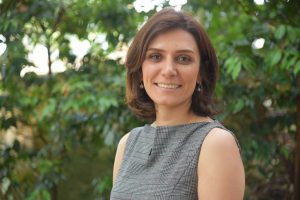 |
|
| POSTPONED
May 4th 2 pm |
Expert: Prof. Sarah J. Spencer | Ph.D | (& student: Mary Slayo)
Position:Head, Neuroendocrinology of the Obese Brain Research Group |
Topic: Your brain and junk food
|
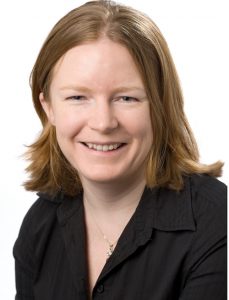 |
|
|
POSTPONED May 18th 2pm |
Expert: Dr Tristan Reid Position: Duty Veterinarian Australian Animal Health Laboratory, CSIRO |
Topic: Bats, Rats and You: – The link between animal and human diseases Outline:Have you ever wondered if your dog could catch your cold? We live and interact with animals every day. We have pets, we go to the zoo, we keep animals on farms and we share our parks and gardens with wildlife. Us humans are really not all that different to animals – we all have to eat, drink, sleep and we all have eyes and ears and noses! But what about our diseases? Can humans catch a disease from animals? Can animals catch diseases from us?! And how does the health of our environment impact on the health of both humans and animals? We are learning more and more every day about the fascinating links between animal, human and environmental health – and how important these links are to the future health of all life on our planet. In this session we’ll take a closer look at some examples of where animal and human health have collided in the past, and what we can learn from these events to prevent more disease outbreaks in the future.Dr Tristan Reid completed a Bachelor of Veterinary Science at the University of Melbourne and a Master of Science in Veterinary Epidemiology and Public Health at the Royal Veterinary College, University of London. He is one of the the Duty Veterinarians at the CSIRO Australian Center for Disease Preparedness.Yr Level Suitability: 5-6 |
 |
|
| June 1st
2pm |
Expert: Dr Mariana Mayer Pinto Position: UNSW Scientia Senior Lecturer |
Topic: Living Seawalls – bringing marine life back to degraded habitats
Outline: The growing human population is rapidly increasing its environmental footprint in the oceans. This is in part due to a construction boom in our seas. Structures such as seawalls, pylons, pontoons and marinas, are built for diverse purposes such as shoreline protection, recreational activities, energy generation and to facilitate communications. In areas of Australia, such as Sydney Harbour, more than 50% of the shoreline has been modified by seawalls. These marine urban structures destroy and replace natural habitats, and can modify the surrounding sea-floor, often with negative consequences on biodiversity. In particular, the flat and featureless surfaces of marine constructions provide little space for marine plants and animals to live, and few protective refuges from predators and environmental stressors, such as high temperatures. The Living Seawalls has developed an innovative approach to bringing marine life back to the thousands of kilometres of concrete coastlines around the world. Habitat features of natural shorelines, such as rock pools and crevices, which are missing from built infrastructure, are reintroduced in these structures using modular panels. The Living Seawalls panels increase the suitable habitat area for growth of seaweeds, shellfish, and other marine life. Yr Level Suitability:Yrs 5 & 6 |
 |
Book here |
| June 15th
2pm Cancelled |
Expert: Mary Slayo Position: Phd CandidateSchool of Health and Biomedical Sciences, RMIT University |
Topic: Your brain and junk food
|
 |
|
| July 20th
2pm |
Expert: Mary Slayo Position: Phd CandidateSchool of Health and Biomedical Sciences, RMIT University |
Topic: Your brain and junk food
|
 |
Book here |
| August 3rd
2pm |
Expert: Chelsea Long
Position:Ice Core Technician, Glaciologist |
Topic: Discussing the formation of ice cores and their importance in understanding the Earth’s climate, what it is like to work in Antarctica, and general ice core processing. With discussions about school subjects and pathways towards careers in STEM Outline: I knew that I wanted to work in Glaciology ever since someone from the Australian Antarctic Division showed me a picture of a person holding an ice core. My favourite part about ice core chemistry is that it’s the closest thing we have to actual time travel. As ice forms is traps impurities, air bubbles, and water molecules creating a layer in time which tells us about the natural and un-natural changes over decades, hundreds, or even thousands of years! I grew up in Tasmania and was never strong in my maths or science subjects but I didn’t let it stop me and now I work as an ice core technician in -20 degree temperatures every day!Suitability:Yrs 5-6 |
 |
Book here |
| August 17th
2pm |
Expert: Dr Nasim Amiralian Position: Australian Institute for Bioengineering and Nanotechnology |
Topic:The Consequences of Plastic Pollution on Our Environment
Outline: Have you ever seen plastic litter on the ground or in the water? Have you ever heard about animals getting hurt because of plastic pollution? Do you want to help protect the environment and wildlife? In this presentation, we will learn about the negative effects of plastic pollution on the environment and wildlife, and how we can play a role in reducing it. You will learn about the sources of plastic waste, how it affects the environment and wildlife, and why it is important to reduce plastic usage and properly dispose of waste. |
 |
Book here |
| October 12th
2pm |
Expert: Dr Erin Hahn Position: Research Fellow CSIRO |
Topic: How to prevent wildlife extinctions with a time machine
Outline: Between 200 and 2000 species go extinct every single year. Join Dr Erin Hahn as she talks about how science is used to protect endangered species. Dr Hahn isn’t your typical biologist. Rather than looking for scientific evidence out in nature, she goes hunting for clues in dusty old museums! Dr Hahn is a wildlife detective and she uses the information encoded in an animal’s DNA to figure which species need our help most and she provides advice on how to help them. Using modern science, Dr Hahn is turning the halls of the Australian National Wildlife Collection into a time machine that can help us turn back the clocks on wildlife extinctions. Yr Level Suitability: 3-6 |
 |
Book here |
| October 26th
2pm
|
Expert:Dr Tristan Reid
Position: Duty Veterinarian Australian Animal Health Laboratory, CSIRO |
Topic: Bats, Rats and You: – The link between animal and human diseases Outline:Have you ever wondered if your dog could catch your cold? We live and interact with animals every day. We have pets, we go to the zoo, we keep animals on farms and we share our parks and gardens with wildlife. Us humans are really not all that different to animals – we all have to eat, drink, sleep and we all have eyes and ears and noses! But what about our diseases? Can humans catch a disease from animals? Can animals catch diseases from us?! And how does the health of our environment impact on the health of both humans and animals? We are learning more and more every day about the fascinating links between animal, human and environmental health – and how important these links are to the future health of all life on our planet. In this session we’ll take a closer look at some examples of where animal and human health have collided in the past, and what we can learn from these events to prevent more disease outbreaks in the future.Dr Tristan Reid completed a Bachelor of Veterinary Science at the University of Melbourne and a Master of Science in Veterinary Epidemiology and Public Health at the Royal Veterinary College, University of London. He is one of the the Duty Veterinarians at the CSIRO Australian Center for Disease Preparedness.Yr Level Suitability: 5-6 |
 |
Book here |
| November 9th
2pm
|
Expert:
Dr. Phoebe Redford (Back in 2025) Australian Centre for Disease Preparedness, CSIRO |
Topic: You Can Do Anything!
|
 |
Book here |
|
2pm
|
Expert: Position: |
Topic:
Outline: Yr Level Suitability:Yrs |
||
|
2pm
|
Expert: Position: |
Topic:
Outline: |
||
|
2pm
|
Expert: Position: |
Topic: Outline: Yr Level Suitability: |
||
|
2pm
|
Expert: Position: |
Topic: Outline: Yr Level Suitability: |
The 2022 Line-Up ….
| Thursday fortnightly @ 2pm Dates & Times 2022 |
Guest Speaker Topic | Topic Details | Photo | Booking Link |
|---|---|---|---|---|
| Feb 17th
2 pm |
Expert: Steven Poropat
Position: Victorian paleontologist |
Topic: Australian Age of Dinosaurs
Outline: In 2016, the Australian Age of Dinosaurs Museum of Natural History (AAOD) was told about a potential discovery of fossilised dinosaur footprints on Karoola Station, 60 km northwest of the outback town of Winton, Queensland. Museum staff and palaeontologists visited the site, not expecting much, but what they observed was so amazing it defied belief: a 40 metre-long sauropod trackway, surrounded by footprints from all manner of Cretaceous critters! These include small theropod and ornithopod dinosaurs, and relatives of modern day crocs and turtles. Between 2018 and 2020, the Snake Creek Tracksite – which is about the length of two basketball courts – was relocated by AAOD staff from Karoola to the AAOD Museum, where it is now on public display. This amazing tracksite captures a snapshot of life in northeast Australia ~95 million years ago, when dinosaurs roamed the outback.
|
 |
Book here |
| March 3rd
2pm |
Expert: Shasta Henry Position: PhD Candidate – Entomology University of Tasmania |
Topic: Insect ID 101 Outline: Do you know the difference between a bug and a beetle? or a moth and a butterfly? I bet you do, because the human brain is very good at detecting small differences. So good that you never had to think about how you know what you know. Shasta will teach the insect characteristics which set common groups apart. So, the next time you are in the garden you can say ‘Butterfly!’ (or moth), with confidence.Year Level Suitability: Yrs 3-4 |
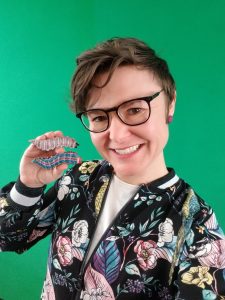 |
Book here |
| March 17th
2pm
|
Expert: Gisela Kaplan Position: Professor in Animal Behaviour and now Prof. emerita at University of New England |
Topic: Do Birds Play? Outline:We play as kids and many adults also play—the idea is to have fun, isn’t it? Can you think of animals that also play? Is there a difference between animals (i.e. some play some don’t) and human play? My studies have shown that some birds can play like humans and that the ones that play most and are most creative are also the brightest and longest-lived. Professor Kaplan has two PhDs, has written 23 books and many research publications and specialises in bird behavior. She has also spent the last 25 years helping injured and orphaned native Australian birds to get back into the wild and find friends and their families again.Year Level Suitability: 3-6 |
 |
Book here |
| April 1st
2 pm |
Expert: Professor John Long
Position:Ice Core Technician, Glaciologist |
Topic: The Life of a Fossil Hunter Outline: John Long has been collecting fossils since he was 7 years old and has made his career being a palaeontologist, working at Museums and Universities in Australia and the USA. His work focuses on the early evolution of fishes, how limbs, jaws and teeth evolved, and how fishes first began to breathe air and invade land as amphibians, about 370 million years ago. John has spent many years working in the Kimberely in Western Australia, as well as participating on 4 expeditions collecting fossils in the remote mountains of Antarctica. he has discovered dinosaurs and marine reptiles, and has written many books, including books for kids about dinosaurs, prehistoric mammals, the evolution of life, and our changing environments. Palaeontologists today use high-tech new approaches – CT scanners, synchrotrons and other amazing machines that allow us to see inside fossils and reconstruct the life of the past with greater accuracy.. Year Level Suitability: Yrs 5-6 |
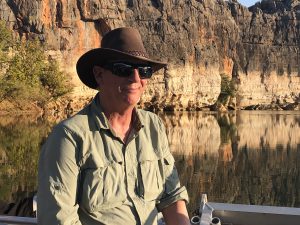 |
Book here |
|
May 5th 2pm |
Expert: Professor Martin Kranendonk Position: Professor of Geology and Astrobiology at the University of New South Wales |
Topic: How did life begin on Earth and could there be life on Mars
Outline: Life is complex and it is found everywhere on Earth, from deep in the crust to high in the skies. But what about on other planets? Do they have the ingredients to harbour life and, more importantly, did they have the conditions required to get life started? In this presentation, I’ll discuss where and how life got started on Earth and we’ll explore the most likely place(s) to search for life elsewhere in our solar system. |
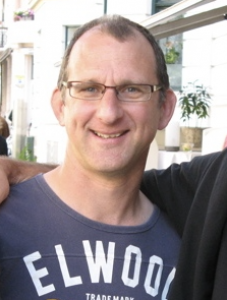 |
Book here |
| May 19th
2pm |
Expert: Professor Sarah Spenser Position: Associate Professor & Head of Neuroendocrinology of Obese Brain Research Group, RMIT |
Topic: Your brain and junk food Outline: What does a brain look and feel like? How do brains know when we’re full? How might junk food change our brain? Inside our skulls lies a grapefruit-sized squishy organ that is responsible for everything we do, feel, and think. Our brains and bodies communicate by chemicals produced by our bodies that travel in our blood. Our brains and bodies also communicate by wire-like structures called neurons that send electrical signals from everywhere in our bodies up to our heads and back again faster than you can blink. Both of these methods of communication can be damaged by not enough nutritious food or too much junk food.In this STEMex lesson, we’ll talk about:
Yr Level Suitability: 5-6 |
 |
Booking link |
| June 2nd
2pm |
Expert: Dr. Tristan Reid Position: Duty Veterinarian Australian Animal Health Laboratory, CSIRO Postponed until October |
Topic: Bats, Rats and You: – The link between animal and human diseases Outline: Have you ever wondered if your dog could catch your cold? We live and interact with animals every day. We have pets, we go to the zoo, we keep animals on farms and we share our parks and gardens with wildlife. Us humans are really not all that different to animals – we all have to eat, drink, sleep and we all have eyes and ears and noses! But what about our diseases? Can humans catch a disease from animals? Can animals catch diseases from us?! And how does the health of our environment impact on the health of both humans and animals? We are learning more and more every day about the fascinating links between animal, human and environmental health – and how important these links are to the future health of all life on our planet. In this session we’ll take a closer look at some examples of where animal and human health have collided in the past, and what we can learn from these events to prevent more disease outbreaks in the future.Dr Tristan Reid completed a Bachelor of Veterinary Science at the University of Melbourne and a Master of Science in Veterinary Epidemiology and Public Health at the Royal Veterinary College, University of London. He is one of the the Duty Veterinarians at the CSIRO Australian Center for Disease Preparedness.Yr Level Suitability: 5-6 |
 |
Book here |
| June 16th
2pm |
Expert: Professor Michael Kasumovic
|
Topic: Why redback spiders are the coolest animals. Outline: The redback spider is an iconic Australian species. In this talk, I’ll discuss the really cool and unique behaviours and traits that these spiders have evolved. I’ll also explain the different selective pressures that have led to the evolution of these traits. By the end of the talk, if you don’t agree that these spiders are awesome, you can ask for your money back! (Note: this talk is free, so you won’t actually get any money back). Join me for this interactive talk where you will be involved in designing experiments to explore and understand the behaviour of redback spiders. Yr Level Suitability: Yrs 5-6 |
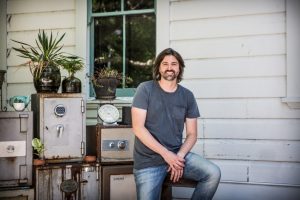 |
Book here |
| July 21st
2pm |
Expert: Dr. Stephen Poropat
Position: Victorian paleontologist |
Topic: Australian Age of DinosaursOutline: In 2016, the Australian Age of Dinosaurs Museum of Natural History (AAOD) was told about a potential discovery of fossilised dinosaur footprints on Karoola Station, 60 km northwest of the outback town of Winton, Queensland. Museum staff and palaeontologists visited the site, not expecting much, but what they observed was so amazing it defied belief: a 40 metre-long sauropod trackway, surrounded by footprints from all manner of Cretaceous critters! These include small theropod and ornithopod dinosaurs, and relatives of modern day crocs and turtles. Between 2018 and 2020, the Snake Creek Tracksite – which is about the length of two basketball courts – was relocated by AAOD staff from Karoola to the AAOD Museum, where it is now on public display. This amazing tracksite captures a snapshot of life in northeast Australia ~95 million years ago, when dinosaurs roamed the outback.
Year Level Suitability: 5-6 |
 |
Book here |
| August 4th
2pm |
Expert:Chelsea Long Position: Ice Core Technician, Glaciologist Australian Antarctic Program Partnership (University of Tasmania, CSIRO, Bureau of Meterology and the Australian Antarctic Division)  |
Topic: Discussing the formation of ice cores and their importance in understanding the Earth’s climate, what it is like to work in Antarctica, and general ice core processing. With discussions about school subjects and pathways towards careers in STEM Outline: I knew that I wanted to work in Glaciology ever since someone from the Australian Antarctic Division showed me a picture of a person holding an ice core. My favourite part about ice core chemistry is that it’s the closest thing we have to actual time travel. As ice forms is traps impurities, air bubbles, and water molecules creating a layer in time which tells us about the natural and un-natural changes over decades, hundreds, or even thousands of years! I grew up in Tasmania and was never strong in my maths or science subjects but I didn’t let it stop me and now I work as an ice core technician in -20 degree temperatures every day!Suitability:Yrs 5-6 |
 |
Booking link |
| August 18th
2pm |
Expert: Dr. Mariana Mayer Pinto Position: Scientia Senior Lecturer at the University of New South WalesPostponed to October 13th 2022 |
Topic: Living Seawalls – bringing marine life back to degraded habitats
Outline: The growing human population is rapidly increasing its environmental footprint in the oceans. This is in part due to a construction boom in our seas. Structures such as seawalls, pylons, pontoons and marinas, are built for diverse purposes such as shoreline protection, recreational activities, energy generation and to facilitate communications. In areas of Australia, such as Sydney Harbour, more than 50% of the shoreline has been modified by seawalls. These marine urban structures destroy and replace natural habitats, and can modify the surrounding sea-floor, often with negative consequences on biodiversity. In particular, the flat and featureless surfaces of marine constructions provide little space for marine plants and animals to live, and few protective refuges from predators and environmental stressors, such as high temperatures. The Living Seawalls has developed an innovative approach to bringing marine life back to the thousands of kilometres of concrete coastlines around the world. Habitat features of natural shorelines, such as rock pools and crevices, which are missing from built infrastructure, are reintroduced in these structures using modular panels. The Living Seawalls panels increase the suitable habitat area for growth of seaweeds, shellfish, and other marine life. |
 |
|
| September 1st
2pm
|
Expert: Phoebe Redford Position: Australian Centre for Disease Preparedness, CSIRO |
Topic: You Can Do Anything Outline: Would you ever think that someone who grew up on a farm would end up working in Paris, London, China, Japan or Canada? What about going from a school of 200 kids to speaking to politicians at Parliament House in Canberra? Or what if you were working as a labourer, could you end up photographing the world’s first coronavirus vaccine being given to an animal for the first time ever?! These are all things that I’ve been lucky enough to do during my career, and I’m not even old yet! There are so many exciting things you can do in the world of science and truly make a difference to the world we live in. And, importantly, it doesn’t matter where you come from, how smart you are, how cool (or uncool) you may think you are or that you don’t know what you want to be. If you really want to achieve something, you absolutely CAN! I’d like to tell you about my journey and hopefully inspire you to look beyond the boundary to see what you can do. Yr Level: Yrs 3-4 |
 |
Book here |
| September 15th
2pm
|
Expert: Dr. Stephen Poropat Position: Victorian paleontologist |
Topic:Australian Age of Dinosaurs Outline: Australian Age of DinosaursOutline: In 2016, the Australian Age of Dinosaurs Museum of Natural History (AAOD) was told about a potential discovery of fossilised dinosaur footprints on Karoola Station, 60 km northwest of the outback town of Winton, Queensland. Museum staff and palaeontologists visited the site, not expecting much, but what they observed was so amazing it defied belief: a 40 metre-long sauropod trackway, surrounded by footprints from all manner of Cretaceous critters! These include small theropod and ornithopod dinosaurs, and relatives of modern day crocs and turtles. Between 2018 and 2020, the Snake Creek Tracksite – which is about the length of two basketball courts – was relocated by AAOD staff from Karoola to the AAOD Museum, where it is now on public display. This amazing tracksite captures a snapshot of life in northeast Australia ~95 million years ago, when dinosaurs roamed the outback. Yr Level Suitability: 3-6 |
 |
Book here |
| October 13th
2pm
|
Expert: Dr. Mariana Mayer Pinto Position: Scientia Senior Lecturer at the University of New South Wales |
Topic: Living Seawalls – bringing marine life back to degraded habitats
Outline: The growing human population is rapidly increasing its environmental footprint in the oceans. This is in part due to a construction boom in our seas. Structures such as seawalls, pylons, pontoons and marinas, are built for diverse purposes such as shoreline protection, recreational activities, energy generation and to facilitate communications. In areas of Australia, such as Sydney Harbour, more than 50% of the shoreline has been modified by seawalls. These marine urban structures destroy and replace natural habitats, and can modify the surrounding sea-floor, often with negative consequences on biodiversity. In particular, the flat and featureless surfaces of marine constructions provide little space for marine plants and animals to live, and few protective refuges from predators and environmental stressors, such as high temperatures. The Living Seawalls has developed an innovative approach to bringing marine life back to the thousands of kilometres of concrete coastlines around the world. Habitat features of natural shorelines, such as rock pools and crevices, which are missing from built infrastructure, are reintroduced in these structures using modular panels. The Living Seawalls panels increase the suitable habitat area for growth of seaweeds, shellfish, and other marine life. Yr Level Suitability:Yrs 5 & 6 |
 |
Book here |
| October 27th
2pm
|
Expert: Dr. Tristan Reid Position:Duty Veterinarian Australian Animal Health Laboratory, CSIRO |
Topic: Bats, Rats and You: – The link between animal and human diseases
Outline: Have you ever wondered if your dog could catch your cold? We live and interact with animals every day. We have pets, we go to the zoo, we keep animals on farms and we share our parks and gardens with wildlife. Us humans are really not all that different to animals – we all have to eat, drink, sleep and we all have eyes and ears and noses! But what about our diseases? Can humans catch a disease from animals? Can animals catch diseases from us?! And how does the health of our environment impact on the health of both humans and animals? We are learning more and more every day about the fascinating links between animal, human and environmental health – and how important these links are to the future health of all life on our planet. In this session we’ll take a closer look at some examples of where animal and human health have collided in the past, and what we can learn from these events to prevent more disease outbreaks in the future.Dr Tristan Reid completed a Bachelor of Veterinary Science at the University of Melbourne and a Master of Science in Veterinary Epidemiology and Public Health at the Royal Veterinary College, University of London. He is one of the the Duty Veterinarians at the CSIRO Australian Center for Disease Preparedness. |
 |
Book here |
| November 10th
2pm
|
Expert: Dr. Erin Hahn Position: CSIRO Australian National Wildlife Collection |
Topic: How to prevent wildlife extinctions with a time machine Outline:Between 200 and 2000 species go extinct every single year. Join Dr Erin Hahn as she talks about how science is used to protect endangered species. Dr Hahn isn’t your typical biologist. Rather than looking for scientific evidence out in nature, she goes hunting for clues in dusty old museums! Dr Hahn is a wildlife detective and she uses the information encoded in an animal’s DNA to figure which species need our help most and she provides advice on how to help them. Using modern science, Dr Hahn is turning the halls of the Australian National Wildlife Collection into a time machine that can help us turn back the clocks on wildlife extinctions. Yr Level Suitability: 3-6 |
|
Book here |
| November 24th
2pm
|
Expert: Molly Hoak Position: Applied Science Advisor Environmental Protection Authority |
Topic: “What is water pollution? How you can help keep our creeks, rivers and oceans clean” Outline: This session will cover the meaning of pollution and what sort of things EPA Victoria looks for when we’re looking for pollution. I will also go into how pollution can change waterways and create an unhealthy environment for humans and animals and what we can do to protect these waterways and keep them healthy. Yr Level Suitability: Yrs 3-6 |
 |
Book here |
This was our fabulous 2021 lineup of STEM experts!
| Thursday fortnightly @ 2pm Dates & Times 2021 |
Guest Speaker Topic | Topic Details | Photo | Booking Link |
|---|---|---|---|---|
| May 6th
2pm |
Expert: Karen Player
Position: Australian Environmental Education Science Educator
|
Topic: Life in our Oceans
|
 |
|
| May 20th
2pm |
Expert: Dr. Tiana Preston
Position: Environmental Water Resource Planner, Melb. Water
|
Topic: Securing water for the environment & our platypus
Outline: Water is essential for life in our rivers, creeks, estuaries and wetlands. Water gets taken out of our rivers for a variety of uses, so we need to carefully plan how we ensure there is enough left in the environment for the creatures that rely upon it, like our unique platypus. In this session we’ll look at the role of environmental water in protecting animals such as the platypus, and what you can do to help ensure a healthy future for our waterways. Year Level Suitability: 5-6 |
 |
|
| June 3rd
2pm Postponed due to Lockdown |
Expert: Dr Phoebe Readford
Position: Australian Centre for Disease Preparedness, CSIRO
|
Topic: You can do anything!
Outline: Would you ever think that someone who grew up on a farm would end up working in Paris, London, China, Japan or Canada? What about going from a school of 200 kids to speaking to politicians at Parliament House in Canberra? Or what if you were working as a labourer, could you end up photographing the world’s first coronavirus vaccine being given to an animal for the first time ever?! These are all things that I’ve been lucky enough to do during my career, and I’m not even old yet! There are so many exciting things you can do in the world of science and truly make a difference to the world we live in. And, importantly, it doesn’t matter where you come from, how smart you are, how cool (or uncool) you may think you are or that you don’t know what you want to be. If you really want to achieve something, you absolutely CAN! I’d like to tell you about my journey and hopefully inspire you to look beyond the boundary to see what you can do. Year Level Suitability: 3-4 |
 |
|
| June 17th
2pm |
Expert: Professor Sarah Spencer
Position: Associate Professor & Head of Neuroendocrinology of Obese Brain Research Group, RMIT
|
Topic: Your brain and junk food
Outline: What does a brain look and feel like? How do brains know when we’re full? How might junk food change our brain? Inside our skulls lies a grapefruit-sized squishy organ that is responsible for everything we do, feel, and think. Our brains and bodies communicate by chemicals produced by our bodies that travel in our blood. Our brains and bodies also communicate by wire-like structures called neurons that send electrical signals from everywhere in our bodies up to our heads and back again faster than you can blink. Both of these methods of communication can be damaged by not enough nutritious food or too much junk food.
In this STEMex lesson, we’ll talk about:
Year Level Suitability: 5-6 |
 |
|
|
July 15th 2pm |
Expert:Dr Kate Charlton-Robb Position: Marine Mammologist, Marine Mammal Foundation  |
Topic: Our fragile oceans
Outline: Dr. Kate Charlton-Robb is the Founding Director and Head of Research at the Marine Mammal Foundation. With over 17 years’ experience researching dolphins across southern Australia, Kate achieved a Bachelor of Science with a double major in Freshwater and Marine Ecology and Zoology and a Doctor of Philosophy. Her research led to the formal description and naming of a new Australian species of dolphin, the Burrunan dolphin, Tursiops australis. Kate has instigated and supervised numerous applied marine mammal research projects. Kate has numerous peer- reviewed scientific publications aimed at informing positive conservation and management outcomes of marine mammals. A highlight of Kate’s career was personally meeting Sir David Attenborough in 2013. |
 |
|
| July 29th
2pm |
Expert: Dr Tristan Reid Position: Duty Veterinarian Australian Animal Health Laboratory, CSIRO  |
Topic: Bats, Rats and You – The link between animal and human diseases Outline: Have you ever wondered if your dog could catch your cold? We live and interact with animals every day. We have pets, we go to the zoo, we keep animals on farms and we share our parks and gardens with wildlife. Us humans are really not all that different to animals – we all have to eat, drink, sleep and we all have eyes and ears and noses! But what about our diseases? Can humans catch a disease from animals? Can animals catch diseases from us?! And how does the health of our environment impact on the health of both humans and animals? We are learning more and more every day about the fascinating links between animal, human and environmental health – and how important these links are to the future health of all life on our planet. In this session we’ll take a closer look at some examples of where animal and human health have collided in the past, and what we can learn from these events to prevent more disease outbreaks in the future.Dr Tristan Reid completed a Bachelor of Veterinary Science at the University of Melbourne and a Master of Science in Veterinary Epidemiology and Public Health at the Royal Veterinary College, University of London. He is one of the the Duty Veterinarians at the CSIRO Australian Center for Disease Preparedness.Yr Level Suitability: 5-6 |
 |
|
| August 12th
2pm |
Expert: Steve Poropat Position: Victorian paleontologist. |
Topic: Australian Age of Dinosaurs Outline: In 2016, the Australian Age of Dinosaurs Museum of Natural History (AAOD) was told about a potential discovery of fossilised dinosaur footprints on Karoola Station, 60 km northwest of the outback town of Winton, Queensland. Museum staff and palaeontologists visited the site, not expecting much, but what they observed was so amazing it defied belief: a 40 metre-long sauropod trackway, surrounded by footprints from all manner of Cretaceous critters! These include small theropod and ornithopod dinosaurs, and relatives of modern day crocs and turtles. Between 2018 and 2020, the Snake Creek Tracksite – which is about the length of two basketball courts – was relocated by AAOD staff from Karoola to the AAOD Museum, where it is now on public display. This amazing tracksite captures a snapshot of life in northeast Australia ~95 million years ago, when dinosaurs roamed the outback. Yr Level Suitability: Yrs 5/6 |
 |
|
| August 26th
2pm |
Expert: Dr. Molly Hoak Position: Applied Science Advisor Environmental Protection Authority |
Topic: “What is water pollution? How you can help keep our creeks, rivers and oceans clean” Outline: This session will cover the meaning of pollution and what sort of things EPA Victoria looks for when we’re looking for pollution. I will also go into how pollution can change waterways and create an unhealthy environment for humans and animals and what we can do to protect these waterways and keep them healthy. Yr Level Suitability: Yrs 3-6 |
 |
|
| September 9th
2pm |
Expert: Shasta Henry Position: PhD Candidate – Entomology University of Tasmania  |
Topic: Insect ID 101 Outline: Do you know the difference between a bug and a beetle? or a moth and a butterfly? I bet you do, because the human brain is very good at detecting small differences. So good that you never had to think about how you know what you know. Shasta will teach the insect characteristics which set common groups apart. So, the next time you are in the garden you can say ‘Butterfly!’ (or moth), with confidence.Suitability: Yrs 3-4 |
 |
|
| September 16th
2pm |
Expert: Prof. Kathy Andrews
Position:Acting Director Griffith Institute for Drug Discovery
|
Topic: Parasites and our world – from head lice to malaria!
Outline: Did you know that parasites are all around us? Some you might know well – like head lice or fleas on your cat or dog. Other types of parasites can cause diseases in animals or humans. Professor Kathy Andrews is scientist who is trying to discover new medicines for a parasite disease called malaria. She also loves talking about science and is the author and producer of four interesting and fun children’s books about different kinds of science including parasites, nanotechnology, forensic science and protein crystal science. In this STEMex lesson Professor Kathy will read her book about parasites and talk about what is it like to be a parasite scientist and author. (Note: Strictly limited to 4 classrooms of up to 25 students. Each student will receive a copy of Professor Andrews children’s book featured in this presentation!) Suitability: Yrs 3-6 |
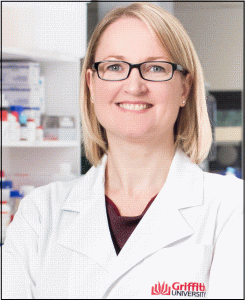 |
|
| October 21st
2pm |
Expert:Chelsea Long Position:Ice Core Technician, Glaciologist Australian Antarctic Program Partnership (University of Tasmania, CSIRO, Bureau of Meterology and the Australian Antarctic Division) |
Topic: Discussing the formation of ice cores and their importance in understanding the Earth’s climate, what it is like to work in Antarctica, and general ice core processing. With discussions about school subjects and pathways towards careers in STEM. Outline: I knew that I wanted to work in Glaciology ever since someone from the Australian Antarctic Division showed me a picture of a person holding an ice core. My favourite part about ice core chemistry is that it’s the closest thing we have to actual time travel. As ice forms is traps impurities, air bubbles, and water molecules creating a layer in time which tells us about the natural and un-natural changes over decades, hundreds, or even thousands of years! I grew up in Tasmania and was never strong in my maths or science subjects but I didn’t let it stop me and now I work as an ice core technician in -20 degree temperatures every day! Yr Level Suitability: Yrs 5-6 |
 |
|
| November 4th
2pm
|
Expert: Dr Phoebe Readford Position: Australian Centre for Disease Preparedness, CSIRO  |
Topic: You can do anything Outline: Would you ever think that someone who grew up on a farm would end up working in Paris, London, China, Japan or Canada? What about going from a school of 200 kids to speaking to politicians at Parliament House in Canberra? Or what if you were working as a labourer, could you end up photographing the world’s first coronavirus vaccine being given to an animal for the first time ever?! These are all things that I’ve been lucky enough to do during my career, and I’m not even old yet! There are so many exciting things you can do in the world of science and truly make a difference to the world we live in. And, importantly, it doesn’t matter where you come from, how smart you are, how cool (or uncool) you may think you are or that you don’t know what you want to be. If you really want to achieve something, you absolutely CAN! I’d like to tell you about my journey and hopefully inspire you to look beyond the boundary to see what you can do. Yr Level Suitability: Yrs 3-4 |
 |
|
| November 18th
2pm CANCELLED |
Expert:Chris Johnson Position:World Wildlife Fund global marine scientist specialising in technology and science communication to achieve conservation outcomes. |
Topic: Outline: Yr Level Suitability: |
 |
